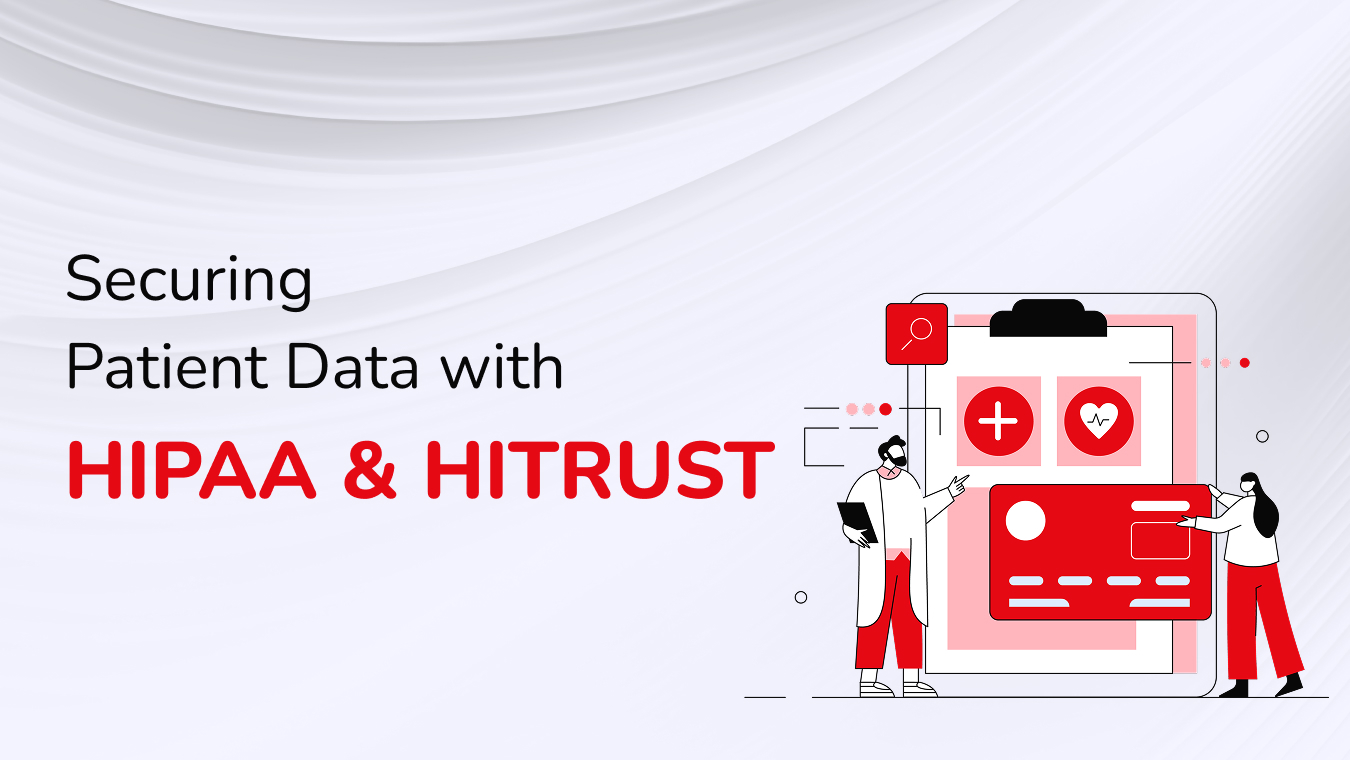Healthcare Data Protection: Aligning HITRUST CSF & HIPAA in Digital Health
Healthcare organizations are undergoing transformation during the digital transformation period. AI-powered diagnostics, telemedicine, cloud-based Electronic Health Records (EHRs) systems, and cloud-based EHRs are all examples of the changes to patient care. As with all technology, the risk of exposing sensitive patient data comes with the these changes.

In the context of the healthcare systems in the US, data protection is guided by two key frameworks: HIPAA and HITRUST CSF. Although HIPAA establishes the minimum requirements for safeguarding health information, HITRUST builds on HIPAA’s concept by providing a more prescriptive and certifiable framework. Integrating these frameworks simultaneously can aid healthcare organizations in more effectively managing risk, proving compliance, and fostering trust among patients.
The Health Insurance Portability and Accountability Act (HIPAA) of 1996 continues to be the bedrock of U.S. health data privacy and security. It sets forth guidelines to protect health data (PHI) from being misused, especially in its electronic storage or transmission.
- Privacy Rule: Oversees the utilization and revelation of PHI.
- Security Rule: Obligates to have administrative, physical, and technical safeguards in place to mitigate ePHI risks.
- Breach Notification Rule: Obligates to provide timely notifications to the concerned parties and the regulators of the data breach.
Although HIPAA is crucial for organizations, it is vague in how to put it into action. It focuses on outcomes: ‘what’ needs to be safeguarded. It gives organizations the leeway to determine the measures to be taken based on their size and resources. This approach, however, leads to varying implementations of these measures.
HITRUST CSF is an example of a certifiable risk management and compliance framework. Its objective is to mitigate the confusion caused by the fragmented and the oftentimes haphazard collection of data protection standards. The framework is built from a myriad of other frameworks, which include:
- HIPAA
- NIST SP 800-53
- ISO/IEC 27001
- GDPR
- PCI DSS and others
By combining these standards into a unified, scalable framework, HITRUST CSF provides organizations with specific control requirements and maturity models for implementation. It not only offers guidance but also a formal certification process, which is something HIPAA lacks.
Healthcare providers, insurers, and technology vendors have come to understand that being compliant with HIPAA alone does not guarantee effective cybersecurity. To centrally address cyber threats, vendors and healthcare insured organizations are turning to HITRUST CSF to:
- Implement mapped controls to operationalize HITRUST.
- Measure and validate compliance through an auditable processes.
- Provide necessary compliance documentation to Partners, vendors and regulators.
A good example is the difference in ‘encryption’ compliance. While HITRUST compliance may require encryption the policies are much more explicit with key management, control testing, and other necessary procedures which make everything clear, compliant, and auditable.
- Enhanced Security Posture
With HITRUST, the gaps left by HIPAA’s ambiguity are mitigated, and in turn, providing a comprehensive set of controls. - Third-Party Trust and Transparency
Partners, payers, and investors are now able to receive verifiable assurances of compliance, allowing certification to offer transparency to external stakeholders. - Audit Readiness
As organizations become better able to meet the requirements set forth in audits and investigations, their regulatory risk decreases. - Operational Efficiency
The compliance burden associated with overlapping standards greatly increases and with the structured nature of HITRUST, the burden is reduced.
These are some of the issues while attempting to use HITRUST CSF alongside HIPAA:
- Excessive Demand – Achieving HITRUST certification has a high cost, both in terms of a significant investment of resources, time, and expertise.
- Overwhelming – A practitioner or a small startup with no security staff will find an in-depth set of security requirements largely overwhelming.
- Constant Upkeep – The requirement to track both outlines means that security and compliance is an ongoing effort, unlike the HIPAA framework.
Even so, the benefits in risk management, reputational risk mitigation, and future growth opportunity often surpass the difficulties.
The future possibilities of automated compliance technologies, continuous control monitoring, and AI-auditing could enable lower overhead and greater scalability.
The integration of HIPAA with HITRUST CSF frameworks enables health tech companies to more effectively protect sensitive information and encourage innovative approaches. While HIPAA sets out the bare minimum legal requirements, HITRUST provides the compliance framework. Using technologies from both frameworks provides an operational and certifiable solution to protecting healthcare data.
Trust from patients within the healthcare ecosystem operates as a fragile currency. It is gained through unwavering transparency along with the strong protection of sensitive information. Achieving these business objectives continues to be a focus of technological advances. The integration of these frameworks is, indeed, a business necessity.
We're Here To Help